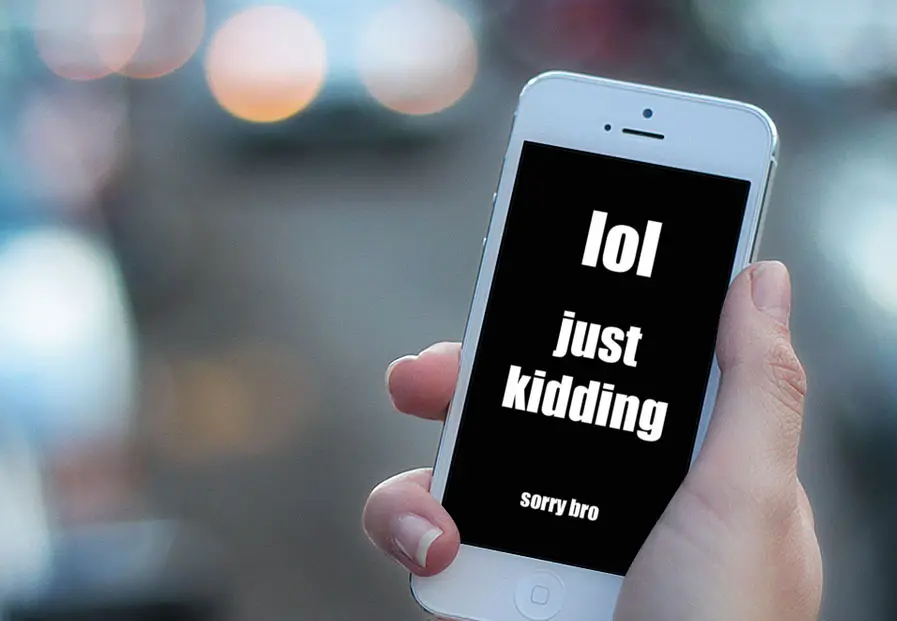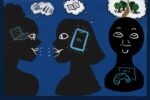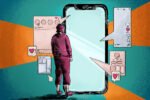The landline rings. The alarm goes off. The phone buzzes.
In the modern age, the soundtrack of everyday life features a cacophony of sounds from various technological devices. Even moderate technology users have grown accustomed to the never-ending “beeps” and “boops” that seem to wield some sort of dictatorial control over their daily behavior.
Users exist in a constant state of expectation, anticipating — with varying degrees of dependency — a vibration or ringtone from the phone or device attached to their hip. But have you ever thought you heard a buzz or a ring and then checked your phone, only to be greeted by a blank notification screen? This eerie occurrence is far from out of the ordinary.
Psychologist David Laramie coined the term “ringxiety” to aptly describe the confused feeling when one mistakes a random sound for a phone’s ring. A 2012 study found that 89 percent of undergraduates reported experiencing ringxiety approximately once every two weeks, on average; interestingly, very few considered it an annoyance.
Yet ringxiety’s prevalence should undoubtedly elicit some general unease. While not necessarily a diagnosable syndrome, widespread ringxiety points to a deep, emotional — and possibly worrisome — attachment to devices and even enables some marketing manipulation.
Georgia Tech University published work about phantom vibration syndrome, the “hallucination” experienced when someone thinks they feel their phone vibrate, but in reality nothing is there. Dr. Robert Rosenberger said the best way to understand this phenomenon is by examining “learned bodily habits.” A phone moving in a person’s pocket or even a muscle spasm could be misperceived as a vibration.
But Dr. Daniel Kruger of the University of Michigan affirmed that psychological factors are at play and influence the frequency of these incidents. In his study with 411 volunteers, Kruger found that subjects “who scored higher in attachment anxiety were up to 18 percent more likely to experience phantom ringing and notifications.”
Ringxiety can come with a plethora of negative side effects, including “headache, stress, and sleep disturbances,” said Dr. Brenda Wiederhold, editor-in-chief of the journal Cyberpsychology, Behavior and Social Networking.
Last semester, I had an uncanny, yet admittedly humorous, first experience with ringxiety. In the past I had experienced it on a smaller scale, which included checking my phone and seeing nothing was there, but I always ended up thinking it was just a fluke.
On the night before registration for spring semester classes, my roommate was up late getting ready to go to bed and I was sound asleep. Suddenly, I woke up. Without a doubt in my mind, I was certain I had heard my alarm go off. I turned off the alarm set for 6:30 a.m. and proceeded to climb out of bed in a groggy haze.
My roommate seemed surprised and asked if I was alright. I said of course, and she left to use the ladies room. When she returned, she witnessed me almost fully dressed, preparing to go and register for classes. Through hysterical laughter, she told me that it was 2 a.m. My alarm actually had not gone off, and there were still five more hours until registration.
How is it, then, that I was convinced I had heard my alarm that morning? Even more alarming, this incident happened two more times. Luckily, I realized what time it was before changing out of my pajamas, but these occurrences perplexed me.
Ringxiety came to my attention during my morning read of theSkimm. I delved into the subject and was immediately taken aback by the thorough scientific research on the sensation. An article in the New York Times explained that the human ear is especially sensitive to sounds between 1,000 and 6,000 hertz, which include babies’ cries and the typical ringtone (“brrring, brrring”).
Even Laramie, the creator of the term ‘ringxiety,’ has suffered from the phenomenon. “My experience has been hearing just a few notes that are similar to my phone’s ring, my brain will fill in the rest,” Laramie says.
Scientists are not the only professionals interested in these findings; advertisers can strategically use electronic tones in their commercials to influence viewers. Peter Arnell of the Arnell Group declared that cellphones are “the most controlling device in our life right now,” and that sound can be manipulated to control emotions.
He provided the hypothetical scenario of ending a commercial with a high-pitched sound that prods listeners to look for their phones, right before the concluding call to action to buy the product, call the company’s number, etc.
One might think it would be obvious whether a sound came from the television or the phone in one’s pocket, but Guy Moore at McGill University in Montreal believes differently. He holds that sounds around 1,000 hertz are difficult for the ear to detect the source.
He used the example of driving down the street and hearing an ambulance’s blaring siren, but not knowing where exactly it comes from. Likewise, someone could feasibly believe the phone in their bag is ringing when in actuality the television advertisement is employing a clever sound stunt.
Only recently has this problem prevailed. Before the world became inundated with tones and sounds produced from a wide array of ever-expanding technology, hallucinations of this kind were not relevant or worrisome. Now, as phones and devices have become “extensions of ourselves,” per Dr. Rosenberger, ringxiety and phantom vibration syndrome’s predominance astonishes researchers.
Dr. Larry Rosen, a research psychologist interested in the mind and technology, provided a seemingly simple solution in theory: Take some time away from your phone to reduce anxiety levels and overall dependence. Easier said than done. For many, phones, laptops, iPads and other devices are necessary for working, staying in contact with parents or children and commuting from place to place.
In addition, it’s improbable that one would be able to fully cut himself or herself off from technology, even for half an hour. So much of the daily exposure to technology is out of one’s control; the television could be on at work or in the school lounge, the radio could be playing in the bus, etc.
The noises that overwhelm a significant portion of technology users, specifically college students, have created a quintessential 21st-century issue. The very devices that connect millions also disrupt basic daily behavior, emphasizing a widespread dependency on technology and revealing underlying attachment issues.
Studies suggest that few undergraduates consider ringxiety a nuisance, but in failing to do so, students discount a pressing concern that impacts everyday actions.
Sooner or later, everyone with exposure to technology may start “hearing things.” As new devices continue to emerge, who can say how long until almost everyone regularly and obsessively checks their devices, never sure if they can trust what they feel and hear.

















